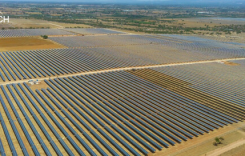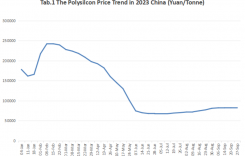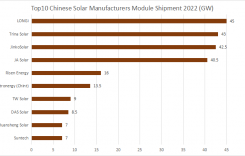PVTIME – A new report by the UK-based climate and energy think tank Ember reveals that, for the first time in the first half of 2025, global renewable energy generation, including wind and solar, has surpassed coal power, cementing its role as a core part of the world’s electricity supply. This historic milestone marks a critical turning point in the global energy transition, boosting progress towards the climate goals set out in the UAE Consensus.

Between January and June 2025, global electricity demand increased by 2.6% year-on-year. Renewable generation increased by 403 TWh, covering all new demand and overtaking coal in total output. Renewables produced 5,072 TWh, while coal generated 4,896 TWh, the first time that renewables have outperformed coal in any six-month period on record.
Solar power drove this shift, with global solar generation surging by 31% year-on-year to meet 83% of the world’s growing electricity needs. Solar power now accounts for 8.8% of the global electricity supply, an increase of 1.9% points from the previous year. Meanwhile, dozens of countries now obtain over 10% of their power from solar energy, nearly double the figure from four years ago. China led global solar growth, contributing 55% of the increase, followed by the US, the EU, India, and Brazil.
Meanwhile, coal generation saw a structural decline, falling by 0.6% globally. Both China and India reduced coal use, with China’s drop being described as a structural shift signalling long-term energy restructuring. Although the US and EU increased their use of fossil fuels due to weak wind and hydropower output, emissions from the global power sector still fell slightly thanks to emission cuts in China and India.
Ember’s senior power analyst, Małgorzata Wiatros-Motyka, noted that the world is at a pivotal point where the growth of solar and wind energy could match or even exceed the rise in global electricity demand. She added that falling technology costs are unlocking the economic and social benefits of clean energy. Sonia Dunlop, CEO of the Global Solar Council, emphasised that clean energy has evolved from a niche technology into a core driver of the global power system.
The International Energy Agency forecasts that global renewable energy capacity will double within the next five years, with solar PV accounting for 80% of this growth. As storage technology costs drop below $100 per MWh, clean energy is becoming more reliable and cost-effective, paving the way for the 2030 goal of tripling global renewable capacity. Experts widely agree that, if current growth continues, 2025 will be the ‘take-off year’ for the global energy transition.

Scan the QR code to follow PVTIME official account on Wechat for latest news on PV+ES











